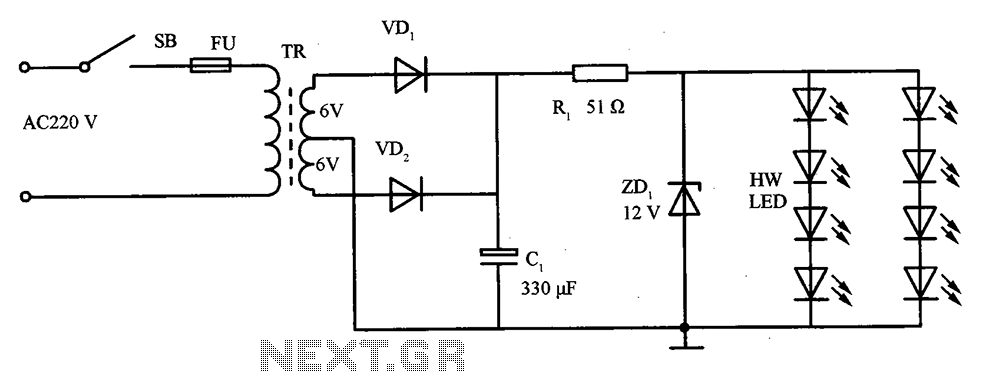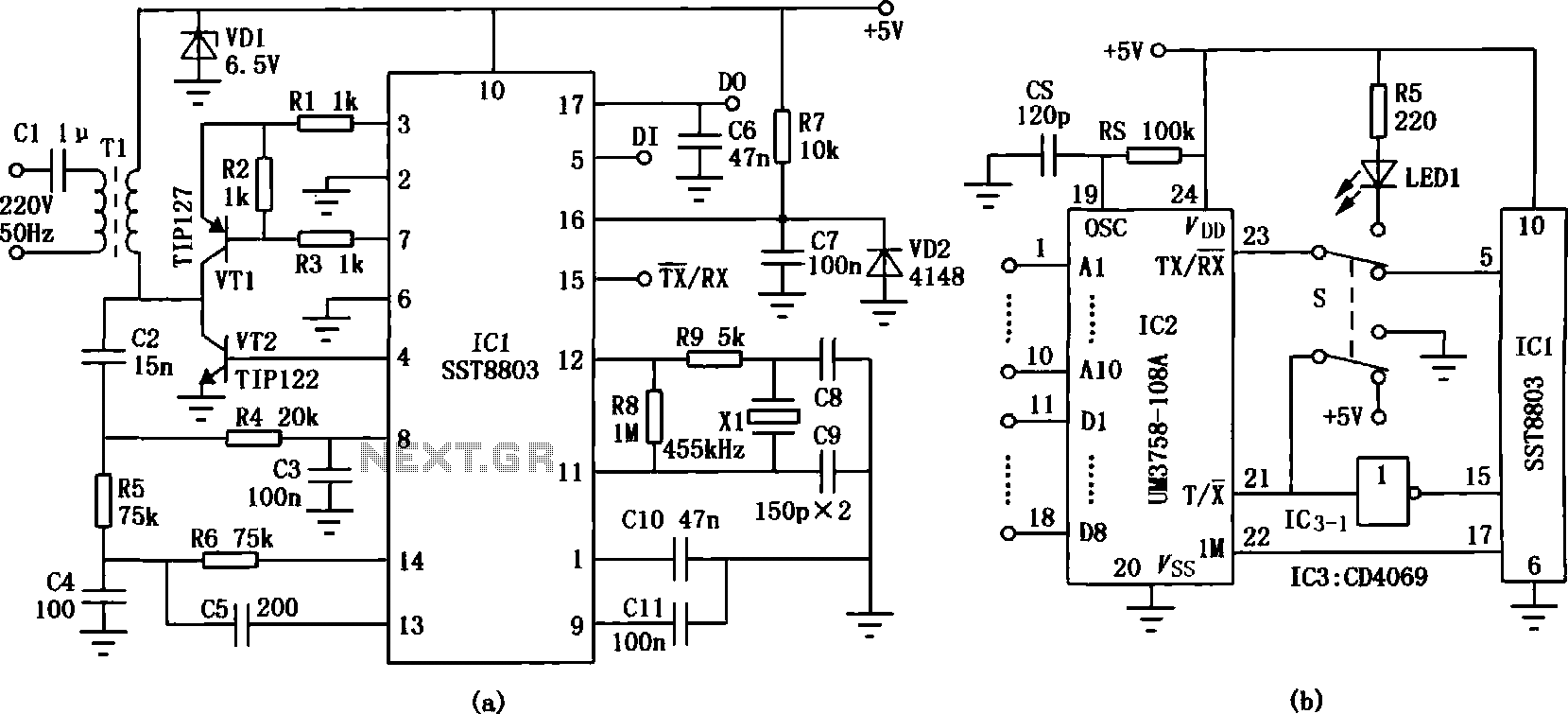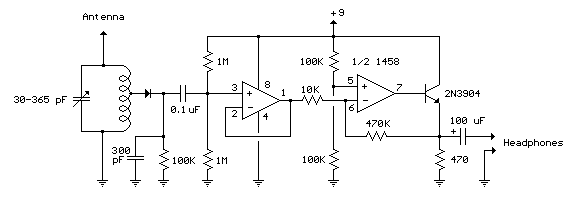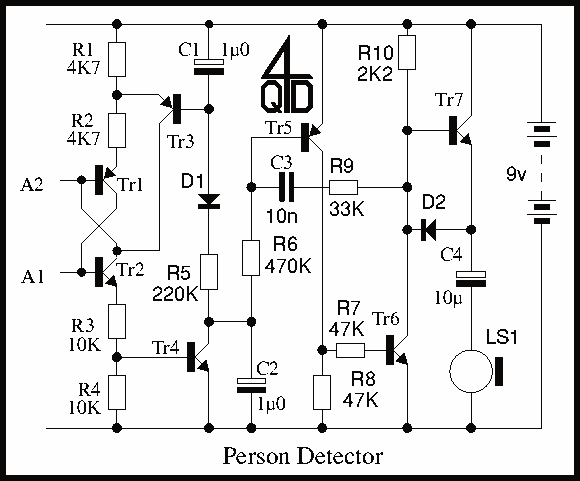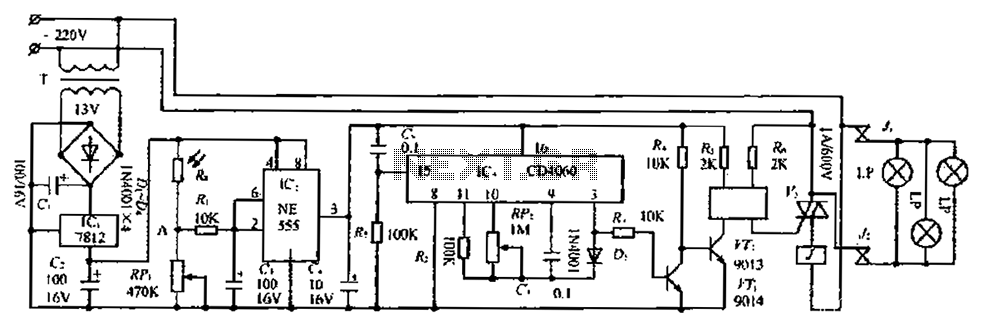
frequency conversion circuit composed of LM311
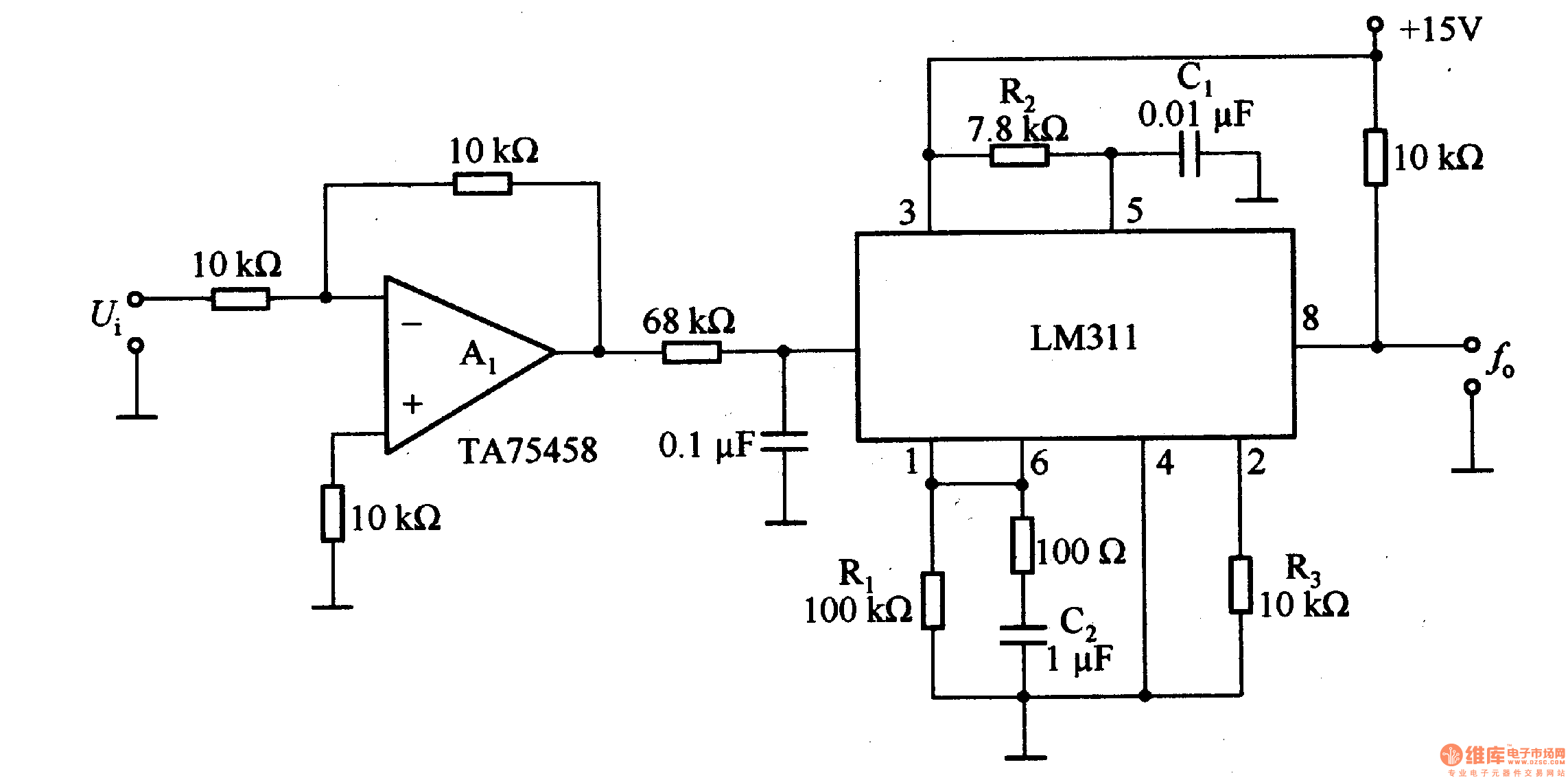
The LM311 is an integrated circuit that functions as a reference voltage generator, comparator, amplifier, and discharge circuit. It is designed for ease of use. In the circuit, the output frequency f0 is...
The LM311 is a versatile integrated circuit that serves multiple functions, including voltage referencing, signal comparison, amplification, and discharge operations. As a comparator, it can compare two input voltages and output a high or low signal depending on the comparison result. This feature is particularly useful in applications such as zero-crossing detectors, level shifters, and pulse-width modulation systems.
The LM311 operates with a single power supply, typically ranging from 5V to 30V, allowing for flexibility in various circuit designs. Its output is capable of driving TTL (Transistor-Transistor Logic) loads directly, which enhances its usability in digital applications. The device includes an open-collector output, which enables the connection of multiple LM311 devices to a single output line, facilitating wired-AND configurations.
In terms of performance, the LM311 boasts a fast response time, typically around 1.5 microseconds, making it suitable for high-speed applications. The input common-mode voltage range extends from the negative supply voltage to approximately 1.5V below the positive supply voltage, which provides a wide range for input signal processing.
When designing a circuit utilizing the LM311, it is essential to consider the external components required for optimal operation. For instance, the inclusion of hysteresis can improve the noise immunity of the comparator by utilizing positive feedback, which stabilizes the output against small fluctuations in the input voltage. Additionally, proper bypass capacitors should be placed near the power supply pins to ensure stable operation and minimize power supply noise.
In summary, the LM311 is a highly functional integrated circuit that simplifies the design of various electronic applications involving voltage comparison and signal processing. Its ease of use, combined with its robust performance characteristics, makes it a popular choice among engineers and designers in the field of electronics.LM311 is the integrated chip within reference voltage, comparator circuit, amplifier, discharge circuit, and it is easy to use. In the circuit, the output frequency f0 is.. 🔗 External reference
The LM311 is a versatile integrated circuit that serves multiple functions, including voltage referencing, signal comparison, amplification, and discharge operations. As a comparator, it can compare two input voltages and output a high or low signal depending on the comparison result. This feature is particularly useful in applications such as zero-crossing detectors, level shifters, and pulse-width modulation systems.
The LM311 operates with a single power supply, typically ranging from 5V to 30V, allowing for flexibility in various circuit designs. Its output is capable of driving TTL (Transistor-Transistor Logic) loads directly, which enhances its usability in digital applications. The device includes an open-collector output, which enables the connection of multiple LM311 devices to a single output line, facilitating wired-AND configurations.
In terms of performance, the LM311 boasts a fast response time, typically around 1.5 microseconds, making it suitable for high-speed applications. The input common-mode voltage range extends from the negative supply voltage to approximately 1.5V below the positive supply voltage, which provides a wide range for input signal processing.
When designing a circuit utilizing the LM311, it is essential to consider the external components required for optimal operation. For instance, the inclusion of hysteresis can improve the noise immunity of the comparator by utilizing positive feedback, which stabilizes the output against small fluctuations in the input voltage. Additionally, proper bypass capacitors should be placed near the power supply pins to ensure stable operation and minimize power supply noise.
In summary, the LM311 is a highly functional integrated circuit that simplifies the design of various electronic applications involving voltage comparison and signal processing. Its ease of use, combined with its robust performance characteristics, makes it a popular choice among engineers and designers in the field of electronics.LM311 is the integrated chip within reference voltage, comparator circuit, amplifier, discharge circuit, and it is easy to use. In the circuit, the output frequency f0 is.. 🔗 External reference
